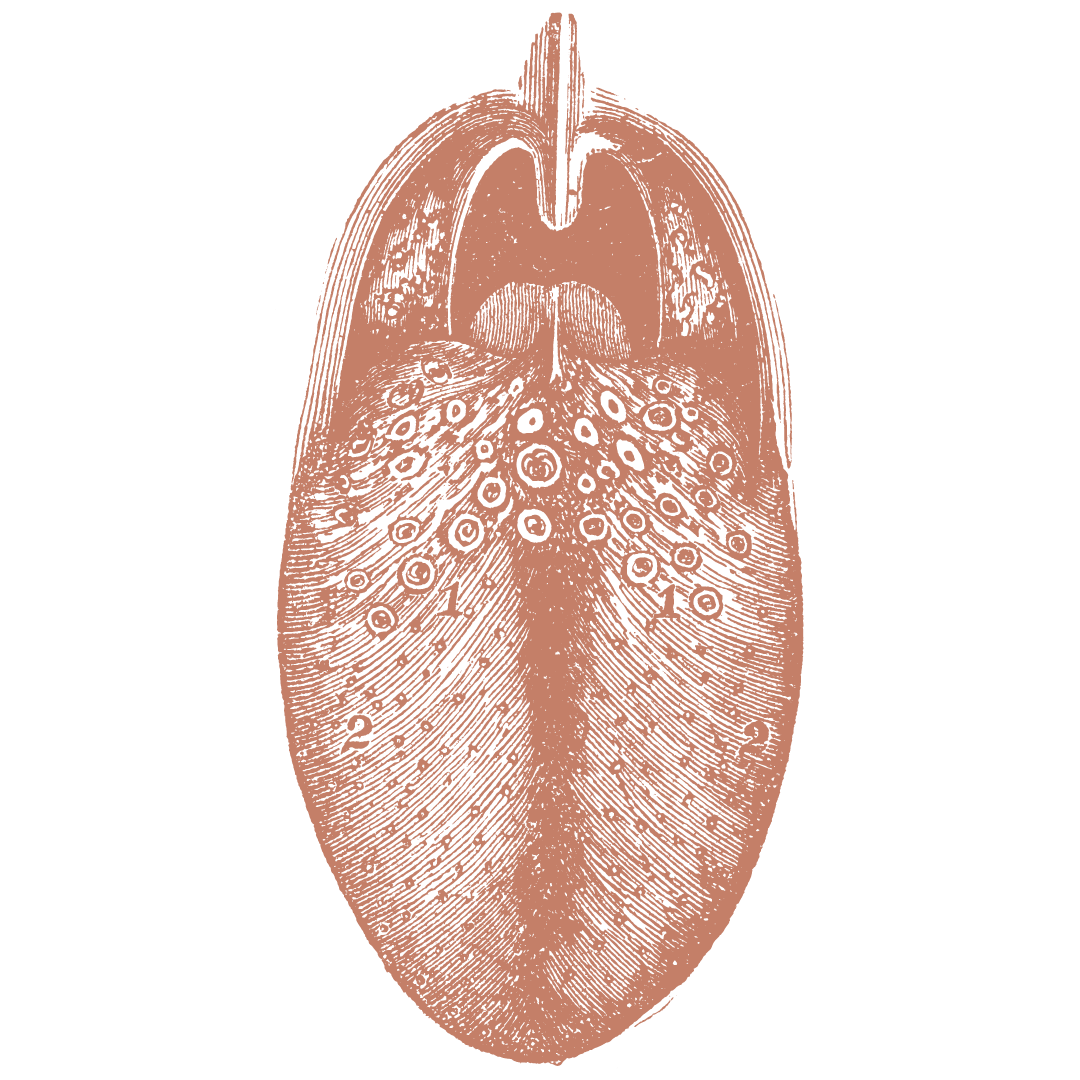
It’s Kapha season!
Ahh. Take a slow, deep breath.
In Ayurevda, it is the kapha time of the year now. seeing us through to late spring. The winter/early spring season holds the perfect antidote to the fast-paced movement of summer and autumn This is a time to rest, reflect, hold space, vision, hibernate, and withdraw some of our outwardly-focused energy and redirect it inward.
On the other hand, the calm, peaceful nature of the winter/early spring can also seem a bit oppressive at times and can leave us feeling weighed down, heavy, stagnant, or uninspired. Actually, every season has the potential to either boost or reduce your sense of well-being depending on your natural constitution and any imbalances.
If you have a predominantly kapha constitution, the qualities of kapha (slow, steady, moist, smooth, oily, cool, heavy) will be expressed in your body and mind. Your frame and build will tend towards strong and robust and you will likely have large eyes, a radiant complexion and thick, lustrous hair.
You are probably friendly, compassionate and easy going too. If you know someone with a kapha personality then they are probably a really loyal and nourishing friend. When in balance, kapha types are the teddy bears amongst us, sweet in nature and an absolute pleasure to be around.
However, the heavier qualities of kapha can sometimes leave kapha types feeling a little sluggish and lethargic; they are the soundest sleepers of all the dosha types.
When it comes to getting things done then, kapha-dominated types tend to take their time! However, while they might be slow getting going, they are dedicated and absolutely dependable.
Kapha types often have a sweet tooth and may struggle with their weight, especially when it comes to shedding pounds. With a kapha-balancing diet however they can feel much more balanced.
Here are some of the kapha dosha characteristics (please note that we all have some kapha in our bodies and minds):
How to balance kapha:
Ayurveda offers us changes in lifestyle, diet and medicinal herbs.
Lifestyle
Enjoy daily exercise that gets your blood and lymph moving, such as power walking, jogging, cycling, yoga, swimming, a minimum of 5 days a week.
Staying warm and dry, regardless of the weather
Lively and invigorating music, smells, experiences and company.
Saunas and sunbathing
Trying not to over sleep – early bed, early rise!
A daily massage with warm sesame oil
Getting lots of fresh air
Trying new hobbies and activities, taking risks and being spontaneous – even taking a different route to work each day can help!
Stimulating your body and mind on a daily basis
Dietary
Enjoy:
Foods that are bitter, pungent and astringent in taste.
Warm foods, both energetically and in temperature.
Heating spices—like chili, black or cayenne pepper, ginger, cumin and cinnamon
Whole, freshly cooked foods including lots of fresh veggies (favor warm cooked veggies as much as possible)
Light, dry, and warm foods (both energetically and in temperature)
Honey, in moderation, and never cooked.
Only room temperature or warm drinks and herbal teas
Most beans, mung dal, well-cooked tofu or tempeh, or warm soy milk are all okay.
A minimal amount of high-quality sesame, sunflower oil, or ghee in your daily diet.
Eating your meals at routine times.
Taking a deep breath after swallowing your last bite and heading off for your next activity.
Enjoy coffee and caffeine only in moderation.
Avoid:
Foods that are sweet, sour and salty in taste
Cooling foods both energetically and in temperature – no frozen foods or foods eaten straight from the fridge
Heavy and oily foods such as cheese, milk chocolate, chips, nuts, pastries etc
Heavily processed foods such as canned food or ready-meals.
Overeating or eating heavy meals, especially in the evening
Excessive red meat
Foods or drinks which contain refined sugar or syrup, no carbonated drinks
Deep fried foods
Alcohol except the off glass of dry white or red wine
Herbal medicine
Please book an appointment with me so that you can be prescribed herbal medicine appropriate to you and your body/mind/spirit.
Kapha-nourishing Mung bean soup
Mung bean soup
In Ayurveda mung beans are highly revered as they are full of goodness, are easy to digest and they are brilliant at drawing energy downwards to assist in digestion – great for those struggling to eliminate.
Mung Bean Soup
In Ayurveda mung beans are highly revered as they are full of goodness, are easy to digest and they are brilliant at drawing energy downwards to assist in digestion – great for those struggling to eliminate.
You can also make this into my favourite, Pea and Mint soup by adding frozen peas and plenty of chopped fresh mint to taste.
For 3 servings
Ingredients
1 cup of whole green organic mung beans soaked overnight or for at least 4 hours
1 cup of mixed and chopped veg such as peas, broccoli, carrots (optional)
1 cup of green leaves such as spinach or chard (optional)
2 litres of water approx.
1 tbsp of coconut oil or ghee
1tsp turmeric powder
1-2 tsps of garam masala (go easy if your pitta is strong.
1/4tsp of asafoetida (hing)
1tbsp fresh root ginger grated
2 cloves of garlic (again go easy if pitta strong and mind already agitated)
Salt and pepper
Vegan stock
Freshly chopped herbs such as mint, basil, coriander etc to serve.
Method
Heat the coconut oil/ghee in a large saucepan and add all the spices and stir until the aromas are released – be careful not to burn!
Drain, rinse and add the mung beans and stir until they are coated with the spices.
Add the water and bring to the boil, boil uncovered for 5 minutes stirring occasionally.
Reduce the heat to low, add veggies and cover, leaving the lid slightly ajar. Cook until tender, approx. 20 minutes.
Add greens, grated ginger, stock and salt and pepper to taste and return to the heat for 5-10 minutes until beans are soft. Please note that adding salt earlier will make the beans take longer to cook.
Serve hot with any further fresh herbs. You can also blend for a creamy consistency.
What does your tongue say about your health?
Have you ever wondered what your tongue can tell you about your health just by looking at it?
In Ayurveda, the tongue is key in diagnosis, and an Ayurvedic practitioner can get a pretty good idea of a person’s constitution and health just by looking at it – some of you have had the pleasure of showing me your tongue for this very reason!
Image credit https://vibrationalayurveda.com/the-tongue-darshan-parksha-1. (no copyright intended)
Have a look at your tongue next time you are near a mirror. Is there a thick, white coating on it? If so, you would benefit from tongue cleaning, and can read more here
The shape of your tongue can also help you to identify your constitution:
Vata – narrow and off centre
Pitta – medium width and pointy
Kapha – wide and thick
The colour of the tongue also gives information. A healthy tongue looks clean and pink and will have very little coating. Generally, in a relatively healthy patient, there is a slight coating on the back of the tongue, which indicates toxins in the colon undigested, unabsorbed or unassimilated form.
Generally, a purple tongues indicates a vata imbalance, a rich red colour indicates a pitta imbalance and a very pale tongue indicates a dim fire and a kapha imbalance.
The colour of the coating is also significant:
Vata - dark brown/greyish/black coating
Pitta - red/orange/yellow/green coating
Kapha - whitish coating
The landscape of the tongue can reveal an even clearer picture:
Ridged edges or teeth marks around the edge of the tongue indicate malabsorption. Products like artificial sweeteners and chemicals in the diet can compromise the intestinal wall and can prevent the body from absorbing all the needed nutrition from food.
Foam on the tongue can indicate candida, a yeast-like overgrowth, which is generally fed by too much sugar in the diet.
A puffy tongue or a tongue with waves along the perimeter is indicative of stagnant lymph. Eating meals too late at night or drinking wine in the evening can create a puffy tongue.
Ulcers on the tongue can indicate a pitta imbalance and can be treated by a change in diet and medicinal herbs. Talking of such changes, this can influence taste and taste plays an important role in Ayurveda, but more on that another time.
Obviously people are individual and complex and no single sign is absolute so any diagnosis will take into consideration various other factors such as digestive function (any bloating, heart burn, acidity, acid-reflex, constipation, excess flatulence etc.) and diet and lifestyle choices, which is the reason it is important to seek help from an Ayurvedic professional such as myself, so that we can use our experience and knowledge to help you individually.
Using a tongue clearer can be a really helpful way of removing topical toxins each morning and stimulating the digestive process to prevent the build-up of new toxicity. You can invest in a tongue scraper here
Understand your tongue!
Checking your tongue each morning can be a really helpful tool in keeping track of your personal health on a daily basis. I look at my tongue each morning and throughout the day if needed, to gain an understanding of my digestive function Noticing and understanding our tongue gives us direction as to where we might need to make adjustments with our food, herbal medicines and lifestyle choices such as sleep etc.
Image credit https://vibrationalayurveda.com/the-tongue-darshan-parksha-1. (no copyright intended)
Remember Ayurveda is all about self-knowledge and self-healing, it is a preventative approach, and your tongue is just one more place to gain insight!
If you know you are out of balance and feel to heal yourself, then do reach out. Ayurveda is amazing. More information here
CCF tea
Coriander seed, cumin seed & fennel seed
Here’s a tea which can be drunk between meals to flush ama from the system, kindle agni (digestive fire) and reduce digestive disturbances such as flatulence, bloating and acidity.
CCF can also help with malabsorption so that you don’t ‘waste’ energy by eating nutrients that your body can’t absorb. This tea may also help with constipation, loose stools, UTIs, lung congestion and fluid retention.
Mix:
1tsp each of coriander seeds, cumin seeds and fennel seeds with 1.25litres of water and
Simmer with 1.25L of water for at least 8 minutes. Strain and drink throughout the day between meals.
Delicious dairy-free chocolate biscuits
This recipe has been inspired from The Good Stuff by Lucinda Miller
A healthier option for a sweet treat!
Ingredients
175g organic oats
60g organic sunflower seeds
20g organic cocoa powder/cacao powder
40g organic coconut sugar
100ml organic maple syrup
65g melted dairy free butter or 65ml coconut oil
Method
Preheat the oven to 180c/160c fan and line two baking trays with parchment paper
Blitz the oats and sunflower seeds together in a food processor until you have a flour like consistency
Tip the mixture into a large bowl and stir in the cocoa or cacao powder and sugar followed by the maple syrup and melted butter or coconut oil
Combine the ingredients into a firm ball and leave in the fridge for 15 minutes
Then use your hands to make small golf size balls of mixture which you can place on the baking tray and use a fork to gently push down on the ball to create a biscuit shape
(The other option is to place parchment paper over the mixture and use a rolling pin to flatten it before using cookie cutters. I don’t find this works so well)
Bake for 11-12 minutes before leaving them firm up on the trays before transferring to a wire rack to cool
This recipe has been inspired from The Good Stuff by Lucinda Miller.
Balancing miso noodles
This recipe has been inspired from The Everyday Ayurveda Cookbook by Kate O’Donnell
A yummy recipe to balance all the festive food!
Ingredients
4 cups of filtered water
8oz organic tofu cut into cubes
2 cups of chopped veg including some green leaves, such as sea beet (which you can forage at Saints and L’Eree), spinach, chard or kale
½ cup of sea veg, wakame works well
2 handfuls of organic rice noodles
2 tbsp of organic red or white or brown miso
Method
Bring the water to boil in a large saucepan;
Add the tofu, chopped veg and sea veg;
Reduce heat to medium and simmer, covered, for about 10 minutes
Meanwhile, prepare the noodles and add for the last minute of cooking
Prepare the miso by mixing it in a bowl with some hot water (not boiling) to make a paste. Add to the soup and stir before serving.
Please note that you shouldn’t boil miso as this kills the enzymes
This recipe has been inspired from The Everyday Ayurveda Cookbook by Kate O’Donnell
Navigating change
The winds of change are definitely here, we’re at the end of Autumn after all, the Vata time of the year, when the elements of air and ether are at their strongest, ushering greater movement in our lives.
People tell me that they love change but I beg to differ. Even the Yoga Sutras (sutra II.15) tells us that our greatest suffering (dukkha) occurs due to change (parinama).
Sure we love change once it has happened and we can be assured of a happy and positive outcome but the process of change, of moving from one state of being to another, of stepping into the unknown without any guarantee of what might happen next – will we enjoy the new job? Will it work out moving in with our partner? Will we love the new country ? – All of these things can be potentially positive but there is always a moment, always a doubt, a last minute questioning whether we have made the right decision and wouldn’t we be better to maintain the status quo?
This because change brings fear and fear can cause us to resist change.
The mind LOVES certainty. The mind LIKES to ensure safety. The mind will do ALL it can to protect us even if that protection keeps us stuck, scared to make changes and move forward in our lives.
The mind also seeks to find evidence from our PAST to validate its resistance to change, and it LOVES to IMAGINE a FUTURE, usually from a worst case scenario perspective. The mind flip flops frequently between the past and the future and forgets to focus on THIS moment, NOW, when everything is OK. You’re OK aren’t you, right now, reading this?
Our life actually is one of trying to be OK.
Always we are making decisions based on our motivation to be OK. Sometimes the decisions don’t work out as intended, sometimes our judgment is clouded because we don’t see clearly (Per Yoga Sutra I.6, the first of five activities of the mind is correct perception - sometimes we don’t perceive correctly – the second activity is wrong understanding/mistaken knowledge – we don’t understand correctly). Furthermore we can easily delude ourselves (Avidya, ignorance, appears as a klesha, an affliction of the mind, see Sutra II.3), especially if we are confronted with something scary, like change.
However, life is one of constant change, we cannot avoid it; every day the planet is turning, every day the sun sets farther south or north than it did the day before, every day the moon is in a constant process of movement from full to new and new to full, every day In our own lives we move from morning to midday, wake to sleep, birth to death. Even one second turning into the next brings miniscule (or sometimes huge) changes - we are a different person to the one we were ten years ago and no doubt we will be different in ten years’ time from how we are now.
The change of any season is a great way to observe ‘change’ at work but especially now in Autumn. Supported by the increase in air and ether (and the resulting wind), the trees drop their leaves and those leaves return to the earth, where they started the first signs of life in the first place. As the trees move from full-life to a state of dormancy and hibernation throughout the winter period, they are preparing to burst into life again in the Spring. If they didn’t do this, the trees would waste valuable energy and nutrients trying to survive in conditions which do not support them.
So it is with us too. In this Autumnal time of year, by its very nature, Vata is all about movement and we are being asked to create movement in our own lives by letting go to create the space (remember Vata is space/ether and air) for the air to blow the new in - think of the heart chakra, represented by the element of air, sometimes we have a change of heart, sometimes something touches our heart and this changes everything.
Our suffering arises when we resist this process, when we hold on to our leaves when they are ready to drop, when we listen to our head rather than our heart, when we stay stuck in unhealthy relationships, jobs and friendships, when we keep feeding the same unhelpful and limiting mental patterning (habits, thought processes and behaviours), when we cling on and keep doing what we have always been doing because we THINK we know what’s best when all the time our body is screaming at us to let go and rest.
How best then can we navigate change?
Acceptance is key 🗝
But acceptance can take time. We need to accept that we need to make changes in our lives. Spiritual Life Coaching is really helpful here.
More often than not we know we need to make changes, but we don’t always know what changes to make or how to make them. Often the change that needs to be made is internal, setting ourselves free from our conditioning and habitual thought processes and behaviours, healing old wounds and shifting core and limiting beliefs, letting go of outmoded ways of seeing the world and ourselves, changing perspective, as if awaking for the first time.
Having someone help and hold space for us while we navigate all of this is incredibly helpful. Worksheets are provided between sessions for us to consider our limiting beliefs, our relationship with our body, our emotional state, our mental patterning, and the option of considering our diet and lifestyle from an Ayurvedic perspective too, as well as being supported by various spiritual practices including yoga and various breathing and relaxation techniques.
If this resonates, if you know you need to make changes but fear is getting in your way then do reach out and we can discuss how Spiritual Life Coaching may help you.
2. Cultivate greater faith 🙏🏽
Faith is the antidote to fear.
There is a wonderful Vedic chant from the Rig Veda called Shraddha Suktam, which is chanted to strengthen faith. The chant contains a verse, “Shraddha devanadhivaste” which translates as faith is our protection - it really is!
Faith gives us the strength to make changes in our lives, to choose differently, even when there is no certainty of outcome, when we are asked to step into the unknown.
3. Yoga practice 🧘🏻♂️
To cultivate greater faith we might delve deeper into our yoga practice, getting on our mat and taking conscious, comfortable, slow and steady breaths, lengthening into our exhalation, practicing asana (postures) in a steady and comfortable way, taking time to rest, engaging in a Yoga Nidra to work with a Sankalpa (intention) and take us deeper into the body.
We might also enter into prayer - See Sutra I.23 where we are introduced to the concept of Isvara Pranidhanadva, an ultimate being, God, Universe and later, Sutra II.1 defines Kriya yoga as being the yoga of action with three key components, namely Tapah, which means heat/purification, doing something positive like getting on our mat, Svadhyaya, which means self-reflection, such as reading spiritual texts and seeing how they we can incorporate the teachings into our life and Isvara Pranidhanadva appears again as a reminder to surrender, appreciating the notion that we are not in control, that the world does not revolve around us, thus encouraging us to accept our place in things, that there is something higher.
The Yoga Sutras also reminds us in the first chapter (sutras I.13 and I.14) to develop a steady and balanced practice, which takes place over the long term, without interruptions, with a positive attitude, with enthusiasm and thoroughly if we can expect to see any positive changes.
We are basically reminded that there is no quick fix, that we are in this for the long run, NOT just when things are critical but all the time, so that the challenging times, like when we experience change, do not have to end up putting us into a critical state of mind – practicing regularly reduces our suffering.
Explore the first three chapters of the Yoga Sutras with Emma, discussing various sutras and considering how they might be relevant to your life. Each session lasts 60 minutes and can be enhanced by a regular yoga and/or Reiki practice to help support general healing and personal and spiritual development.
4. Spiritual practice 👁
We can expand our spiritual practice beyond our mat, to make all of life an opportunity to cultivate greater faith and help us manage change. We might visit sacred sites, spending time outside in nature, sitting against a tree, taking walks on our own by the sea, reading spiritual books, attending spiritual groups, studying spiritual subjects.
Spiritual Life Coaching can assist in helping you cultivate an authentic and consistent spiritual practice.
5. Reiki 👐🏼
Reiki not only supports our ongoing healing but also promotes our spiritual and personal development. Reiki helps to release energy blocks which will help to free us from the effect of previous trauma and the resulting mental, emotional, physical and energetic patterning that continues to inform our daily life.
In this way, Reiki helps to restore wholeness, positively changing the way we relate to ourselves and others, while increasing our energy and helping us to see our life more clearly. It is extremely helpful through periods of change, when we know something needs to shift, but we don’t quite know how to make it happen.
Becoming attuned to Reiki can also help as you can lay your hands on yourself.
6. Ayurveda 🌿
Staying grounded will help immensely too. Ayurveda offers us many options to help ease anxiety and fear when it arises, eating warming stews, curries and soups, using our hands to consciously prepare food or hands in the earth gardening, massaging our whole body with coconut oil and then lying in a warm bath (adding dead sea salts is really helpful too).
There are herbal medicines we can take too, albeit these need to be prescribed individually for our specific needs.
7. Positive thinking 🔋
As stipulated in Yoga Sutra II.33, when we find ourselves disturbed and not sure of the best way forward, we can look at it from the other side, so we cultivate looking at things from a different perspective to try to resolve doubt and the lack of clarity. This can be like thinking, ‘well what will happen is I don’t do it versus what will happen if I do’. Or put ourself in another person’s point of view.
Thus if we are stuck in an attitude of fear or resentment, we have to positively cultivate the opposite. This involves working with the mind to see things differently, especially when we are stuck.
At such times we are encouraged to divert attention, reflect on potential consequences, take a step back to ask for advice, practice yoga and in such times seeking help from a teacher is invaluable. Spiritual Life Coaching can help enormously as referenced above.
8. Loosening the grip 🌏
We take on habits, or a habitual thought process, and at the very beginning it might serve us in some way, keep us safe for example. But after some time, this way of being and living no longer serves us and it is time to let go and change, make new healthier habits or thought processes. The trouble is we humans are very good at grasping and attaching ourselves to there being one way. It is this inflexibility that ends up causing our suffering.
If we can loosen our grip – aparigraha, the fifth yama or ethical principle/relationship to the world around us as noted in Sutra 11.31 means non-grasping, non-possessiveness, non-attachment – then in theory we can flow more easily moment to moment, adapting to change as it arises, allowing our transformation, and actually arriving in the present moment, experiencing it exactly as it is without needing to react to it.
9. Going with the flow 🌊
Sutra II.3 refers to the ‘kleshas’, the afflictions including attachment/desire (ragas) and aversion/hatred (dvesa) and how we alternate between the two, wanting and rejecting, liking and disliking, and how this causes unsteadiness in the mind.
If we can just let go of our preferences, then we can find greater equanimity. This is particularly relevant if change is forced upon us, sometimes we just need to go with it, let go of our preferences, to be shown that there may be another way – more often than not, redundancy, for example, while a shock, can be a blessing in disguise, presenting new opportunities.
10. Bach Floral Remedies 🌸
Taking Bach floral remedies, the one for fear (Mimulus) or shock (Star of Bethlehem), or overwhelm (Elm) or the Rescue Remedy to help support generally.
11. Spending time with positive people 🪷
When we are navigating change, it is very helpful to spend time with people who are supportive of this.
More often than not people come from a place of self-service and they can be threatened when we make changes in our life, not least because they fear losing us (and their grip over us), but also because we indirectly encourage them to come out of their potential denial about the state of their life.
Many people like to put their head in the sand and they prefer it is those around them to do the same, so they don’t have to face their reality.
12. Feeling into it 🫀
It can be really helpful to feel our fear and anxiety as they arise. To understand its root – which is more often than not, around our safety.
Remember FEAR as False Evidence Appearing Real and challenge it – where is the evidence that we will end up homeless, unwell, dead etc?
For more help please do reach out. The more comfortable we can be with the change, the easier it is for us to weather it when it appears in our lives.
Warming, Ayurvedic, vata-balancing recipes:
Vata-balancing overnight oats
This is a very easy recipe to make in advance and can stay in the fridge for a few days. Can be helpful during this Vata time of year, might well help if suffering with constipation. Go easy if suffering a Pitta imbalance.
This is a very easy recipe to make in advance and can stay in the fridge for a few days. Can be helpful during this Vata time of year, might well help if suffering with constipation. Go easy if suffering a Pitta imbalance.
Ingredients
½ cup of organic rolled oats
½ cup plant-based milk
1 tbsp of chai seeds/pumpkin seeds/sunflower seeds
1 tbsp of maple syrup, date syrup or honey (avoid honey if on a Pitta reducing diet)
Vanilla extract to taste
Method
Mix all the ingredients together in a glass container (straight into a jar which you can take with you to work etc). Cover and refrigerate overnight. You can always top with toasted nuts (avoid cashew and Brazil if on a Pitta reducing diet)
Pea and mint soup recipe
This is a really yummy and gentle soup for the digestive season that leaves you feeling clean on the inside.
This is a really yummy and gentle soup for the digestive season that leaves you feeling clean on the inside.
Ingredients
1 tablespoon of ghee or coconut oil
I small onion or leek chopped
1/4tsp of turmeric powder
Ground pepper and salt to taste
2-3 cups of garden peas (frozen is fine)
1 litre of vegetable stock
Handful of fresh chopped mint
Handful of shredded spinach, chard or kale
Method
In a saucepan over a medium heat, heat the ghee/coconut oil and add the onion/leek, turmeric and ground pepper, and saute gently until the onion/leek is translucent.
Add the peas and stir until coated with the oil and spice.
Add vegetable stock and bring to the boil
Simmer with lid on for ten minutes
Add the mind and green leaves and heat on low for another minute or so, until the greens have wilted.
Blend with a stick blender or in a Vitamix and season to taste.
















This recipe has been inspired from The Good Stuff by Lucinda Miller